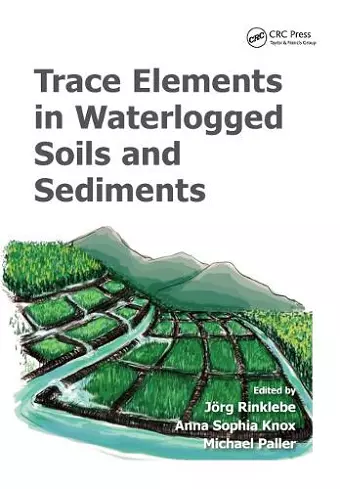Trace Elements in Waterlogged Soils and Sediments
Michael Paller editor Jörg Rinklebe editor Anna Sophia Knox editor
Format:Paperback
Publisher:Taylor & Francis Ltd
Published:30th Sep '20
Currently unavailable, and unfortunately no date known when it will be back
This paperback is available in another edition too:
- Hardback£175.00(9781482240511)

Many wetlands around the world act as sinks for pollutants, in particular for trace elements. In comparison to terrestrial environments, wetlands are still far less studied. A collaborative effort among world experts, this book brings the current knowledge concerning trace elements in temporary waterlogged soils and sediments together. It discusses factors controlling the dynamics and release kinetics of trace elements and their underlying biogeochemical processes. It also discusses current technologies for remediating sites contaminated with trace metals, and the role of bioavailability in risk assessment and regulatory decision making. This book is intended for professionals around the world in disciplines related to contaminant bioavailability in aquatic organisms, contaminant fate and transport, remediation technologies, and risk assessment of aquatic and wetland ecosystems.
"This book not only fills an important gap in advancing our understanding of the environmental behavior of trace elements in waterlogged soils and sediments, but also gives valuable advice for those applying this knowledge in risk assessment, remediation and management of contaminated wetlands and aquatic environments."
— Rainer Schulin, ETH Zürich, Switzerland
"In Trace Elements in Waterlogged Soils and Sediments, a recent offering from CRC Press, editors Rinklebe, Knox and Paller have assembled contributions from an impressive list of accomplished researchers actively working in the field of trace element biogeochemistry as it pertains to waterlogged environmental systems. The book is composed of eighteen chapters roughly divided into three sections focused on fundamental processes, bioavailability, and remediation options. While providing some specific case studies related to a diverse range of contaminated systems, the chapters also contain significant fundamental material that make it equally beneficial to students and more experienced practitioners with interest in this field of study."
— John C. Seaman, University of Georgia, USA
Wetland and other water-logged soils are of special importance in providing particular ecosystem services such as hydrological buffering, organic carbon storage, habitat and biodiversity source. Sediments play a role of similar importance as components of the aquatic environment at the bottom of water bodies. Both have in common that they also act as sinks for recalcitrant chemicals and as such are increasingly loaded with trace elements of anthropogenic origin. Due to the dominance of anaerobic conditions, the fate of trace elements in water-logged soils and sediments is governed by very different processes and mechanisms in these environments as compared to well-aerated soils. Against this backdrop, it is all the more remarkable how little we still know about these processes and the factors driving them. This book thus is very timely. It is also very comprehensive. In eighteen chapters written by experts in the respective fields, it gives the latest findings and insights into physicochemical factors and reactions controlling the speciation and binding of heavy metals and metalloids in water-logged soils and sediments, their bioavailability and the assessment of associated risks for humans and other recipients, and also on established remediation technology. Several chapters have a focus on redox-sensitive metals and metalloids such as arsenic, selenium, chromium and uranium. Some deal with new contaminants such as rare earth elements, others with ‘usual suspects’ such as cadmium and zinc. While various contributions are devoted to more fundamental aspects such as the kinetics of sorption and desorption processes or the mechanisms governing the retention and mobility of nanoparticles in aquatic environments, others provide insight into the role of particular environments such as paddies and other temporary flooded soils for trace element behavior or present specific case studies, e.g. on the fate of subsurface chromium on the Hanford site. In summary, this book not only fills an important gap in advancing our understanding of the environmental behavior of trace elements in waterlogged soils and sediments, but also gives valuable advice for those applying this knowledge in risk assessment, remediation and management of contaminated wetlands and aquatic environments.
--- Rainer Schulin, Professor for Soil Protection, ETH Zürich, Institute of Terrestrial Ecosystems, Switzerland
In Trace Elements in Waterlogged Soils and Sediment, editors Rinklebe, Knox and Paller have assembled contributions from an impressive list of accomplished researchers actively working in the field of trace element biogeochemistry as it pertains to waterlogged environmental systems. The book is composed of eighteen chapters roughly divided into three sections focused on fundamental processes, bioavailability, and remediation options. While providing some specific case studies related to a diverse range of contaminated systems, the chapters also contain significant fundamental material that make it equally beneficial to students and more experienced practitioners with interest in this field of study.
---- John C. Seaman - Savannah River Ecology Laboratory, The University of Georgia.
ISBN: 9780367870034
Dimensions: unknown
Weight: 453g
420 pages